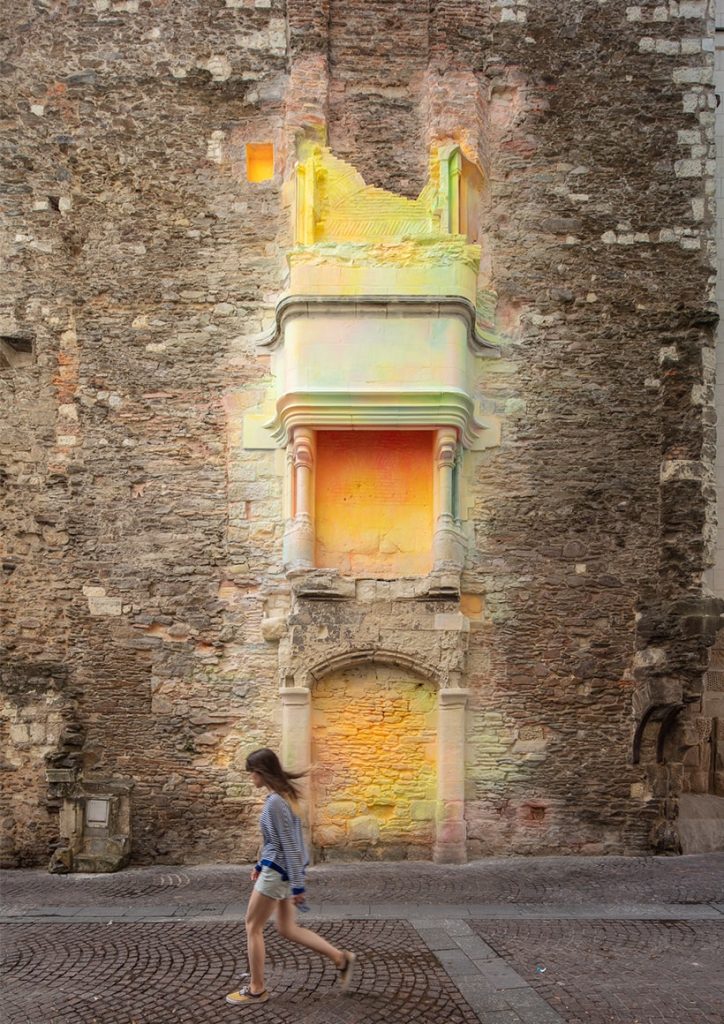Flora Moscovici transforms the enigmatic trace of a tall, 15th century chimney by hoping to awaken the emotional potential of this interior turned exterior.
“Observing spaces that I might walk or travel through, and paying attention to details offering emotions or stimulating my imagination, make up the first steps of my artistic research. the way in which light enters a space, the particular details of its architecture, the traces of history it contains and, of course, the colours – how they were applied and how they age – are all things I try to reveal… this is painting in the broadest sense of the term – in other words, thinking about painting through its multiple definitions by using this medium’s extremely varied possibilities.”
With finesse and respect, Flora Moscovici works directly on stone surfaces to reveal a particular place’s unique history and memory. Using this same attentiveness, she turns her attention to an enigmatic trace of the past: a tall fireplace that hints at the interiors of the former Maison des Échevins (or “county magistrates”) that was home to the 15th century assemblées du conseil bourgeois (“Council of Burghers”) before a true town hall was built in 1564. The building was demolished in the early 20th century to create the street that exists there today.
In an attempt to awaken the visual and emotional potential of this interior turned exterior, Moscovici once again works in situ, tackles the entire surface of the vestige. Painting with a brush, her palette of shimmering colours and her subtle shading sets the fireplace ablaze. In order to reveal the materiality of the stones (ranging from granite to tufa), the paint adapts to their tonality and nature.
This art work was made by applying successive layers of a very thin liquid mixture of limewater and pigments, which eventually fade over time.


Rue des Échevins 44000 Nantes
How to get there?
Parking(s) nearby: Parking Feydeau, Parking Decré-Bouffay, Parking Baco-LU 2 côté CHU, Parking Baco-LU 1 côté gare, Parking Château, Parking Commerce, Parking Hôtel Dieu
Public transport: Bouffay, Commerce, Hôtel Dieu, Monteil
Self-service bicycles: Bouffay (n°20), Château (n°50), Strasbourg (n°3), Moulin (n°4), Commerce (n°30), Barillerie (n°7), Verdun (n°48), Baco (n°52), Ricordeau (n°38), Boucherie (n°8)
Visual artwork.